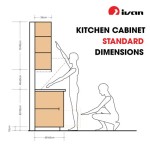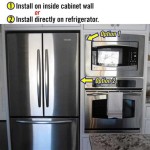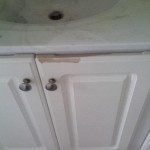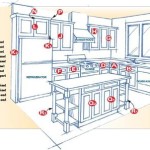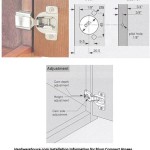Kitchen Cabinet Drawers Replacement: A Comprehensive Guide
Kitchen cabinet drawers, subject to frequent use and often bearing significant weight, are prone to wear and tear. From sticking mechanisms and broken drawer boxes to outdated styles and damaged finishes, a multitude of issues can necessitate replacement. This article provides a detailed examination of the considerations, procedures, and options involved in replacing kitchen cabinet drawers, aiming to equip homeowners with the knowledge required to make informed decisions and achieve optimal results.
Replacing kitchen cabinet drawers is not merely a cosmetic upgrade; it can significantly enhance the functionality and overall aesthetic appeal of a kitchen. By replacing damaged or inefficient drawers, homeowners can improve storage capacity, optimize organization, and modernize the look of their kitchen space. Furthermore, replacing drawers can be a more cost-effective alternative to a complete kitchen remodel, allowing for targeted improvements without incurring the full expense of new cabinetry.
Determining the Need for Replacement
Before embarking on a drawer replacement project, it is crucial to accurately assess the condition of existing drawers and determine whether replacement is indeed the most appropriate solution. Several factors should be considered during this evaluation process. These factors include the type of damage, the frequency of use, and the overall aesthetic of the kitchen.
Type of Damage: The type of damage sustained by the drawers plays a significant role in determining the viability of repair versus replacement. Minor issues, such as loose drawer fronts or chipped paint, can often be addressed with simple repairs. However, more severe damage, such as warped drawer boxes, broken drawer slides, or extensive water damage, may necessitate complete replacement. Addressing structural issues with repair can often be a temporary fix, leading to recurring problems. Replacing the entire drawer assembly provides a more durable and long-lasting solution.
Frequency of Use: Drawers that are subjected to frequent use, such as those in high-traffic areas of the kitchen, are more likely to experience wear and tear. Drawers that are used to store heavy items, such as pots and pans, are also prone to damage. If drawers are constantly being opened and closed, or if they are frequently subjected to excessive weight, their internal components and structural integrity may weaken over time. In such cases, replacement with sturdier and more durable drawers may be the best option.
Overall Aesthetic: The aesthetic appeal of existing drawers is another important consideration. If the drawers are outdated in style, have a damaged or worn finish, or simply do not match the overall décor of the kitchen, replacement can be a worthwhile investment. Replacing drawers with a more modern design or a different finish can significantly improve the overall look of the kitchen, creating a more cohesive and visually appealing space. Replacing drawers is often a less expensive option than re-facing or replacing all of the cabinets.
Measuring for Replacement Drawers
Accurate measurements are paramount when ordering or constructing replacement drawers. Imprecise measurements can lead to ill-fitting drawers that are difficult to install and may not function properly. It is essential to follow a meticulous measuring process to ensure that the replacement drawers fit seamlessly into the existing cabinet frames.
Inside Cabinet Width: Measure the width of the cabinet opening, from the inside of one side panel to the inside of the other side panel. This measurement will determine the maximum width of the drawer boxes. It is important to take measurements at multiple points along the width of the cabinet to account for any variations or imperfections. The smallest width measurement should be used to ensure that the drawer boxes will fit comfortably within the cabinet opening. The drawer slides will also need to be factored into the cabinet width.
Inside Cabinet Depth: Measure the depth of the cabinet opening, from the front edge of the cabinet frame to the back panel. This measurement will determine the maximum depth of the drawer boxes. As with the width measurement, it is important to take measurements at multiple points along the depth of the cabinet to account for any variations. The smallest depth measurement should be used. It is important to remember that the slides will use some of the depth so the drawer must be shallow enough to accommodate them.
Drawer Front Height: Measure the height of the existing drawer fronts. This measurement is important for ensuring that the replacement drawer fronts match the existing cabinet doors and drawers. The height measurement should be taken from the top edge of the drawer front to the bottom edge. If the existing drawer fronts are damaged or missing, it may be necessary to measure the height of the adjacent cabinet doors or drawers to determine the appropriate height for the replacement drawer fronts.
Drawer Box Height: Measure the height of the drawer box. This measurement is important for ensuring that the drawer box will fit within the cabinet opening and that it will have sufficient clearance for the drawer slides. The height measurement should be taken from the bottom of the drawer box to the top edge. It is important to consider the thickness of the drawer bottom when calculating the drawer box height. As with the drawer box depth, the height must be small enough to accommodate the drawer slides.
Choosing the Right Replacement Drawer Components
Selecting the appropriate components for replacement drawers is crucial to ensuring their functionality, durability, and aesthetic appeal. Various options are available for drawer boxes, drawer fronts, and drawer slides, each with its own unique characteristics and advantages. The selection of these components should be based on factors such as budget, desired aesthetic, and expected usage.
Drawer Box Materials: Drawer boxes can be constructed from a variety of materials, including solid wood, plywood, particleboard, and metal. Solid wood drawer boxes are typically the most expensive option, but they offer superior durability and aesthetic appeal. Plywood drawer boxes are a more affordable alternative that still provides good strength and stability. Particleboard drawer boxes are the least expensive option, but they are also the least durable and are prone to damage from moisture. Metal drawer boxes are often used in commercial kitchens, as they are resistant to pests, easy to clean, and stand up to constant heavy usage.
Drawer Front Styles and Materials: Drawer fronts are available in a wide range of styles and materials to match the existing kitchen cabinetry. Common materials include wood, laminate, MDF (medium-density fiberboard), and metal. The style of the drawer front should complement the overall aesthetic of the kitchen. Options include flat-panel, raised-panel, Shaker-style, and slab-style drawer fronts. The material of the drawer front should be durable and resistant to moisture and scratches.
Drawer Slide Types and Weight Capacity: Drawer slides are responsible for allowing the drawers to move smoothly and effortlessly in and out of the cabinet openings. Several types of drawer slides are available, including ball-bearing slides, roller slides, and undermount slides. Ball-bearing slides are typically the most durable and offer the smoothest operation. Roller slides are a more affordable option, but they may not be as durable or smooth. Undermount slides are installed beneath the drawer box and provide a clean, seamless look. The weight capacity of the drawer slides should be appropriate for the items that will be stored in the drawers. Heavy-duty drawer slides are recommended for drawers that will be used to store pots and pans.
Drawer Pulls and Knobs: Drawer pulls and knobs are functional hardware elements that also contribute to the overall aesthetic of the kitchen cabinetry. They are available in a variety of styles, materials, and finishes to match the existing décor. Selecting the right drawer pulls and knobs can enhance the look and feel of the drawers and make them easier to open and close. The proper selection of pulls and knobs can affect the style of the room and the ease by which users are able to use the drawers.
Replacing kitchen cabinet drawers can be a straightforward and rewarding project that can significantly enhance the functionality and appearance of a kitchen. By carefully considering the factors outlined in this guide and making informed decisions about drawer components, homeowners can achieve optimal results and create a kitchen space that is both beautiful and efficient. Proper planning is key to ensuring a successful replacement and a long lasting solution.

How To Replace Kitchen Drawers Shelfgenie

How To Replace Kitchen Drawers Shelfgenie

Replacement Cabinet Drawer Box 11 Doors N More

Cabinet Drawer Front Raised Inner Panel Bevel Round Edge Doors N More

Surfaces 20 In W X 4 H 21 D Natural Maple Finished Cabinet Drawer Box The Kitchen Accessories Department At Com

Rev A Shelf 15 Inch Width Wood Base Cabinet Charging Drawer Replacement System With Soft Close Min Opening 16 1 2 Light Brown 4wcdb 18hsc Cabinetparts Com

Cabinet Doors Drawers Replacement Revelare Kitchens

Drawer Boxes Premade Custom Replacement Kitchen Dc

Can You Buy Just The Drawer Box Cabinet Now

Kitchen Drawer Replacement Excalibur Cabinetry
Related Posts

